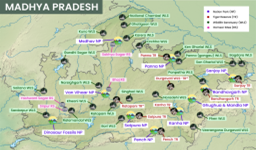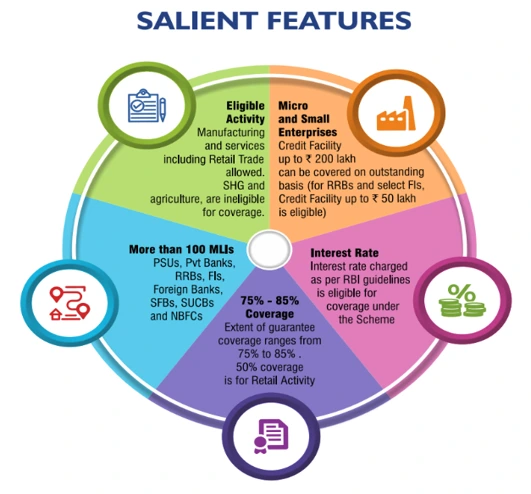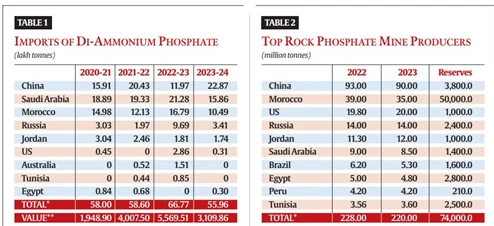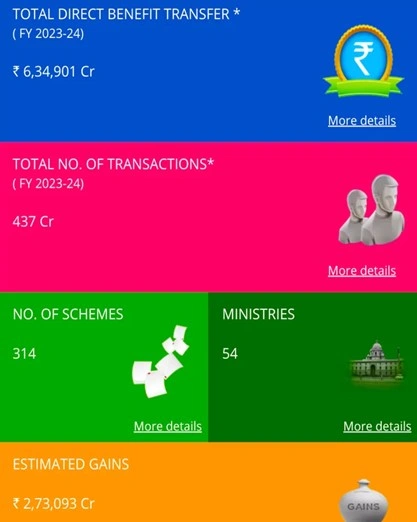Saturday, 21st September 2024
UN Advisory Body on Artificial Intelligence final report
Why in the news?
- Recently, advisory panel was formed last year to examine the international governance of artificial intelligence (AI) and make new recommendations.
AI needs global governance
- The pace of AI development focuses on power and wealth globally, with geopolitical and geoeconomic ramifications.
- Lack of understanding of the inner workings of AI to fully control outcomes or predict trends.
- Because AI technology is cross-border in design and application, it cannot be left to market forces alone.
- To equitably distribute AI opportunities such as upgrading energy grids and improving public health and agriculture.
The gap in global AI governance
- Lack of a truly comprehensive global strategy: In the absence of many AI governance documents and projects.
- Lack of representation: Seven of the sampled countries are part of all AI governance efforts, while 118 countries are neither (mainly in the global South).
- Implementation issue: The promises don’t translate into tangible outcomes that prevent equitable sharing of the opportunities AI provides.
Recommendations:
- An independent international scientific community on AI.
- The Intergovernmental Dialogue on AI Governance is held twice a year.
- Creating an AI standards revolution, connecting stakeholders.
- Building AI capability development networks.
- Creating a global fund for AI to facilitate AI penetration.
- The Creation of a global AI data framework, developed through a process initiated by a relevant agency.
- The UN Secretariat for supporting and coordinating global efforts in AI risk management and global governance.
Source: TH
Food Processing Sector Reforms
Why in the news ?
- Recently, during the 3rd edition of world food india (WFI) 2024, the india PM highlighted significant reforms in the past decade for boosting the food processing sector.
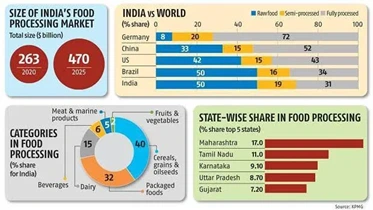
The world food india ( WFI):
- About:
- Launched by the Ministry of Food Processing Industries (MoFSPI) in 2017 to promote investments in India's food processing sector and showcase its rich food culture.
Food Processing Sector in India:
- Growth:
- 7.3% annual growth between 2015-2022.
- The food processing market size in India is estimated to reach $1,274 billion by 2027 from the US. $866 billion by 2022.
- Rising food consumption is expected to reach the United States. $1.2 billion by 2025-26 due to urbanisation and changing infrastructure.
- The Indian packaged food and beverages industry is witnessing significant growth where it is expected to grow from US$ 33.7 billion by 2023 to US$ 46.3 billion by 2028
- Employment:
- 12.22% of registered factory jobs, supporting 2.03 million people and 5.1 million in unregistered food processing.
- Growth drivers:
- Diverse agro-climatic conditions, large raw material base, and India’s leadership in milk, spices, poultry, and fruits production.
Steps taken by the government to improve the efficiency of the project:
- PM Kisan SAMPADA Yojana: Comprehensive provision of modern services and efficient supply chain.
- PMFME Scheme: Legitimizes and scales existing small businesses in the unorganised food processing sector.
- Production Linked Incentive Scheme (PLISFPI): Encourages domestic manufacturing, exports and capacity expansion in food processing, and allows 100% FDI.
- One District Object (ODOP): A framework for establishing value chains in 713 districts, covering 137 unique objects.
- Mega Food Park (MFP) Scheme: Provides modern processing facilities on farms; 41 projects approved, active as at 24 December 2023 .
- Operation Greens: Supports FPO, logistics and processing for tomato, onion and potato (TOP) crops, later expanded to all fruits and vegetables (TOTAL).
Challenges :
- Cold chain logistics: Lack of proper cold storage leads to significant food wastage, especially in the case of perishables.
- Transport: Inadequate road and transport infrastructure shares the flow of goods, affecting the freshness and quality of goods.
- Competitiveness: Stringent compliance with rules and norms set by agencies like FSSAI, especially for small and medium enterprises (SMEs).
- Labour delays: Obtaining permits and approvals can be time-consuming, affecting business operations.
- Reducing modern processes: Many small products lack advanced manufacturing technologies and devices, making them more efficient and scalable
- Price sentiment: Consumers generally appreciate prices, putting pressure on manufacturers’ profits.
- Supply irregularities: Fluctuations in agricultural production due to weather disrupt the supply chain, leading to scarcity and high prices
|
UPSC Civil Services Examination Previous Year Question (PYQ) Prelims Q:1 With what purpose is the Government of India promoting the concept of “Mega Food Parks”? (2011)
Select the correct answer using the codes given below:
Ans: (b) Mains Q:1 What are the reasons for the poor acceptance of a cost-effective small processing unit? How can the food processing unit be helpful to uplift the socioeconomic status of poor farmers? (2017) |
Source: IE
100 Years Discovery of Indus Valley civilisation
Why in the news ?
- In the year 2024 marks the 100 Years completed of the announcement of the discovery of the Indus Valley civilisation.
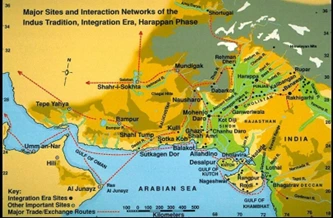
About the civilisation:
- In 1924, John Marshall, then-Director General of the ASI, announced the discovery of the “civilisation of the Indus Valley” in “The Illustrated London News”.
- About 1,500 sites in northwestern India, including in Gujarat, Haryana, Jammu and Kashmir, Maharashtra, Rajasthan, and Uttar Pradesh and about 500 sites in Pakistan, and a few in Afghanistan, with key sites like Harappa, Mohenjo-Daro, Rakhigarhi, and Dholavira.
- The Harappan civilization is identified as a Bronze-age civilization because many objects have been found that are made up of copper based alloys.
- Daya Ram Sahni first excavated Harappa in 1921-22, and Rakhal Das Banerji in 1922 started excavating Mohenjo-daro.
Characteristics:
- Urban Planning: The Harappans created elaborate cities with tunnels, improved drainage systems and standardised brickwork.
- Craftsmanship: Exotic coins, pottery and jewellery were produced, especially unique steatite coins with intact animal figures and inscriptions.
- Trade Relations: The civilization engaged in extensive trade, as evidenced by objects made of lapis lazuli and carnelian from distant regions.
Enigmas:
- Intact Language: Indus script has 400-600 characters and remains intact due to lack of bilingual script.
- Spirituality: Understanding of Harappan religious beliefs is limited. The coins suggest possible deities, but the lack of temples leaves much to be desired.
- Cause of decline: The decline around 1900 BCE is debated, with unclear factors including climate change, tectonic activity, resource overexploitation, and invasions.
- Trade Expansion: The evidence points to trade with Mesopotamia and elsewhere, but the details of the exchanges and their impact on Harappan society remain unclear
Significance:
- Addressing historical gaps: The discovery of the Harappan civilization extended the timeline of settlement in South Asia by more than 3,000 years, reshaping the historical context of urban settlements
- Cultural and Economic Intelligence: The Harappans were skilled artisans in beadwork, pottery and metalwork, adding to their economic power and cultural identity
- Influence on subsequent civilizations: The Harappan civilization influenced later South Asian cultures through its urban practices, agricultural techniques, and possibly religious beliefs
- Sustainable use of water: The Harappans demonstrated water management through drainage and rainwater harvesting and emphasised sustainable agricultural practices
- Trade with Western Asia: Evidence suggests that the Harappans were involved in maritime trade with Mesopotamia and the Arabian Peninsula, indicating their navigational skills
|
UPSC Civil Services Examination PYQ Prelims Q:1 Which one of the following ancient towns is well-known for its elaborate system of water harvesting and management by building a series of dams and channelling water into connected reservoirs? ( 2021)
Answer (a) Q: 2: Which one of the following is not a Harappan site? (2019)
Answer: (c) Q:3 Which of the following characterises/characterises the people of the Indus Civilization? (2013)
Select the correct statements using the codes given below:
Answer: (b) Mains Q:1 The ancient civilisation in the Indian sub-continent differed from those of Egypt, Mesopotamia, and Greece in that its culture and traditions have been preserved without a breakdown to the present day. Comment. (2015) Q:2 To what extent has the urban planning and culture of the Indus Valley Civilization provided inputs to present-day urbanisation? Discuss. (2014) |
Source: TH
White Revolution 2.0
Why in the news ?
- Recently, Union Home and Cooperation Minister Amit Shah launched the standard operating procedure for ‘White Revolution 2.0’.
About the White Revolution:
- The White Revolution, or Operation Flood, was a major dairy development initiative launched in 1970 by the National Dairy Development Board (NDDB) to boost milk production in India.
- Led by Dr. Verghese Kurien, the program successfully addressed milk scarcity, earning Kurien the title "Father of the White Revolution."
Current status in India:
- Production: The milk production of India has registered 58% increase during the last nine years i.e., during the year 2014-15 and 2022-23 and increased to 230.58 Mn Tonnes in the year 2022-23.
- Top 5 states: Rajasthan, Uttar Pradesh, Madhya Pradesh, Gujarat and Andhra Pradesh. Together, they contribute 53.11% of the total dairy production in the country.
- Value-added products: The dairy industry in India has diversified beyond liquid milk to produce value-added products such as butter, ghee, cheese, yoghourt and ice cream
- Economy: Contributes 5% to the national economy and directly benefits over 80 million farmers Employs about 8.47 million people on a yearly basis out of which 71% are women.
What is White Revolution 2.0?
- Aim: The aim is to transform the Indian dairy industry by empowering women farmers, increasing milk production and modernising dairy infrastructure.
- Target: The aim is to increase current procurement of 6.6 million liters per day to 1,000 million liters per day.
- Finance:
- An initial amount of ₹40,000 for each Multipurpose Primary Agricultural Credit Society (PACS) by the National Dairy Development Council.
- Total expenditure was ₹70,125 crore including full government financial support.
Provisions:
- Women Empowerment: Focus on women empowerment in cooperatives dairy. In Gujarat alone, 36 lakh women activities, contributing worth ₹60,000 crore annually.
- Increase in milk procurement: The target is to increase milk procurement by 50% in the next five years.
- Co-operatives: 100,000 new and existing co-operatives (mainly regional co-operatives and agricultural credit unions) have been formed or enhanced.
- RuPay Kisan Credit Cards: To be rolled out across the country for dairy farmers, with micro-ATMs in cooperatives.
- Computerisation of Primary Agricultural Credit Societies: 67,930 Primary Agricultural Credit Societies will be computerised for better management.
Significance:
- Development of Rural Economy: cooperatives and milk procurement ₹4,000 crore will improve rural livelihoods.
- Improvement: Modern technology, micro-ATMs(2600) and computerization will improve efficiency.
- Employment generation: Spread of enterprise and modernization practices will create employment for 13 lakh farmers.
- Reduced malnutrition: Improves milk quality to prevent malnutrition.
- Cooperative Modernization: Focus on artificial intelligence and advanced technology.
- Enhancement of milk exports: Improving production and quality to boost milk exports in India.
Challenges of Dairy Sector in India:
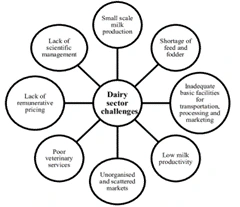
Government Initiatives :
- Rashtriya Gokul Mission (2014): Conserve and develop indigenous cattle breeds to enhance productivity and genetic improvement.
- National Programme for Dairy Development (NPDD, 2014): Strengthen infrastructure for high-quality milk production, procurement, processing, and marketing through State Cooperative Dairy Federations.
- Dairy Entrepreneurship Development Scheme (DEDS): Create self-employment by providing financial assistance for small-to-medium dairy ventures.
- National Animal Disease Control Programme (NADCP, 2019): Vaccinate 100% of cattle, buffalo, and other livestock against Foot & Mouth Disease and Brucellosis.
- National Livestock Mission (NLM): Sustainable livestock development, including dairy farming, improving productivity, health, and feed resources.
|
UPSC Civil services Examination PYQ Mains Q:1 Explain various types of revolutions, took place in Agriculture after Independence in India. How have these revolutions helped in poverty alleviation and food security in India?(2017) Q:2 Q.1 Livestock rearing has a big potential for providing non-farm employment and income in rural areas. Discuss suggesting suitable measures to promote this sector in India. (2015) |
Source: TH
Amoebic meningoencephalitis
Why in the news ?
- Recently, several cases of amoebic meningoencephalitis have been reported in Kerala, mainly affecting children aged 5-15 years.

About amoebic meningoencephalitis:
- About:
- This is a rare but serious infection that affects the central nervous system.
- It is mainly caused by abnormally viable amoebae found in freshwater.
- Types of Amoebic Encephalitis:
- Primary amoebic meningoencephalitis (PAM): It is caused by Naegleria fowleri, known as the “brain-eating amoeba”.
- Granulomatous amoebic encephalopathy (GAE): Symptoms can resemble brain tumors or encephalitis.
- Risks and infection
- Exposure: Usually with swimming or playing in warm, stable, fresh water.
- Other sources: Untreated tap water used in neti pots can also cause infection.
- Amoebae grow in tropical environments and are sensitive to changes in temperature and pH.
Source: TH
TRISHNA Mission
Why in the news ?
- Recently, the President of the French Space Agency, Centre National d’Etudes Spatiales (CNES),celebrated 60 years of French-India space cooperation with the TRISHNA mission.
About the Trishna Mission:
- About:
- The Thermal and Infrared Imaging Satellite for High-Resolution Natural Resource Assessment (TRISHNA) is a joint venture between the Indian Space Research Organization (ISRO) and the French Space Agency (CNES).
- Objectives:
- Provide high spatial and temporal resolution data on Earth surface temperature, vegetation health, and water cycle dynamics.
- Assistance in exploring urban heat islands, detecting volcanic and geothermal activity, and monitoring snow flow and ice dynamics.
- It should provide valuable information on aerosol optical depth, atmospheric water vapor, and cloud cover.
- Benefits:
- Thermal Infrared (TIR) Payload (from CNES): A long-wavelength infrared sensor used to provide a beautiful image of the Earth's surface temperature.
- VNIR-SWIR payload (from ISRO):
- Seven spectral bands used for mapping maps to estimate temperature gradients and biophysical variables.
- Classroom and Life:
- It Operates in a solar and synchronous orbit of 761 km, providing a range of 57 meters in land/coastal areas and 1 km in the ocean.
- It has an operating life of 5 years.
Source: TH
Share the article
Edukemy’s Current Affairs Quiz is published with multiple choice questions for UPSC exams
MCQ
Get Latest Updates on Offers, Event dates, and free Mentorship sessions.

Get in touch with our Expert Academic Counsellors 👋
FAQs
UPSC Daily Current Affairs focuses on learning current events on a daily basis. An aspirant needs to study regular and updated information about current events, news, and relevant topics that are important for UPSC aspirants. It covers national and international affairs, government policies, socio-economic issues, science and technology advancements, and more.
UPSC Daily Current Affairs provides aspirants with a concise and comprehensive overview of the latest happenings and developments across various fields. It helps aspirants stay updated with current affairs and provides them with valuable insights and analysis, which are essential for answering questions in the UPSC examinations. It enhances their knowledge, analytical skills, and ability to connect current affairs with the UPSC syllabus.
UPSC Daily Current Affairs covers a wide range of topics, including politics, economics, science and technology, environment, social issues, governance, international relations, and more. It offers news summaries, in-depth analyses, editorials, opinion pieces, and relevant study materials. It also provides practice questions and quizzes to help aspirants test their understanding of current affairs.
Edukemy's UPSC Daily Current Affairs can be accessed through:
- UPSC Daily Current Affairs can be accessed through Current Affairs tab at the top of the Main Page of Edukemy.
- Edukemy Mobile app: The Daily Current Affairs can also be access through Edukemy Mobile App.
- Social media: Follow Edukemy’s official social media accounts or pages that provide UPSC Daily Current Affairs updates, including Facebook, Twitter, or Telegram channels.

